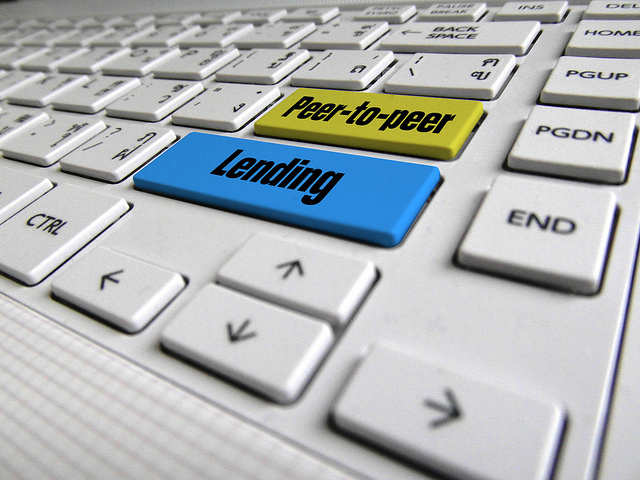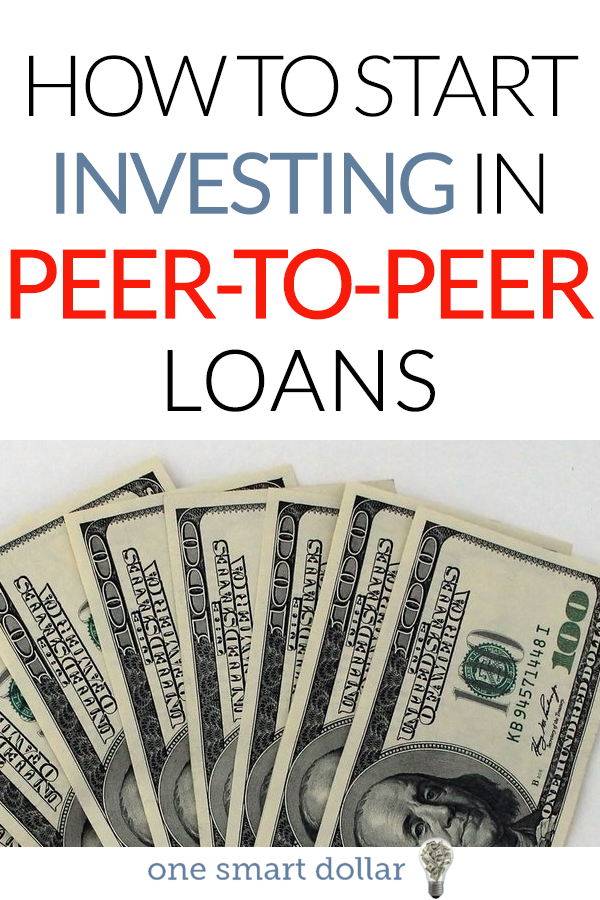
Before the days of peer-to-peer lending, consumers and small business owners had to consult their banks or financial institutions for loans. But, the lending world has changed and evolved to allow people to cut out the middle man and go straight to the source for a personal or business loan. Peer-to-peer loans aren’t only beneficial to the person getting the loan; they’re also beneficial for investors looking to add something new to their portfolios.
How Does Peer-to-Peer Lending Work?
Peer-to-peer lending, also known as P2P lending or crowdfunding, is a way of financing loans for personal or business use that doesn’t involve a financial institution. Instead of a bank financing the loan, investors finance P2P loans. A single P2P loan may come from one investor who backs the full loan amount, or from several investors who finance it with smaller notes to minimize the possible risk of a borrower not paying back the loan.
Typically, P2P loans go through a marketplace that matches borrowers and lenders, like Lending Club and Prosper. Through a P2P marketplace, an investor can view the profiles of potential borrowers and decide whether to help fund their loans based on a grading system that determines risk.
Benefits of Investing in Peer-to-Peer Loans
A P2P lending account is not only incredibly simple to set up, but it can give you, as an investor, an average of 4% to 7% return on investment. Additionally, P2P loan investing allows investors to diversify their portfolios with something other than stocks, bonds, and other more common investments.
Investors may also find that investments in P2P loans are safer than other forms of investing, like stocks, which fluctuate with the economy. Consumers and business owners will continue to need loans, especially during a declining economy, making P2P loans a relatively safe bet for investors.
Tips to Start Investing in Peer-to-Peer Loans
Before you start investing, you should become familiar with the general requirements for investors. Each P2P marketplace has its own set of guidelines for lenders, but the United States Securities and Exchange Commission (SEC) oversees investor regulations.
At a minimum, you must live in an approved state – currently, Arizona, New Mexico, North Carolina, Ohio, and Pennsylvania are excluded – and have a minimum gross annual income of $70,000 and net worth of at least $70,000, or a minimum net worth of $250,000 with no income requirement.
Find the Right Peer-to-Peer Lending Platform
Although Lending Club and Prosper are the most popular lending platforms, there are others on the market. As an investor, you’ll want to find one that will give you the best ROI, provide a simple account setup, and has a proven track record of successful loan issuance and fact-checking the information borrowers provide.
Lending platforms also issue certain fees to investors. For example, you may pay a fee for monthly borrower payments or annual balances left on a loan, usually around 1%. Some additional fees may apply if a court case is necessary to collect on a loan in default. Some platforms, like Upstart, require investors to lend a large minimum amount of $100 or more, so if you only want to invest in smaller notes, find a platform that allows for that.
Minimize Your Risk
No investment is a sure thing, so although investing in P2P loans is one of the safer routes, it doesn’t come without risk. Fortunately, platforms like Lending Club have focused on helping investors minimize their risk with a grading system. Grades A through G help investors determine what borrowers will be more likely to pay back their loans.
Of course, investing in high-risk borrowers may give you a higher ROI due to higher interest rates, but you can likely ensure that you receive at least a small ROI by lending to borrowers with better grades.
Spread Out Your Cash
One of the most important things you can do as a new P2P investor is spread your total investment out over several borrowers rather than finance a full loan. Not only does this help minimize your risk of loss, but it also gives you more diversity and control over your investments.
Stick to smaller notes of $25 or more, rather than large notes worth hundreds of dollars. Choose borrowers with different grades – some high-risk and some low-risk – to find out what tends to work best for you. You’ll learn the ropes without risking too much of your total cash up front.
The Bottom Line: Investing in Peer-to-Peer Loans
As far as investing goes, peer-to-peer lending is a relatively solid choice with minimal risk. Of course, you should be prepared to occasionally lend to a borrower who can’t pay back his loan. But, if you stick to diversifying your investments through smaller notes to borrowers of different grades, you stand to earn a high ROI. Use your earnings to re-invest in more notes and you’ll have a continuous investment income with minimal work.


